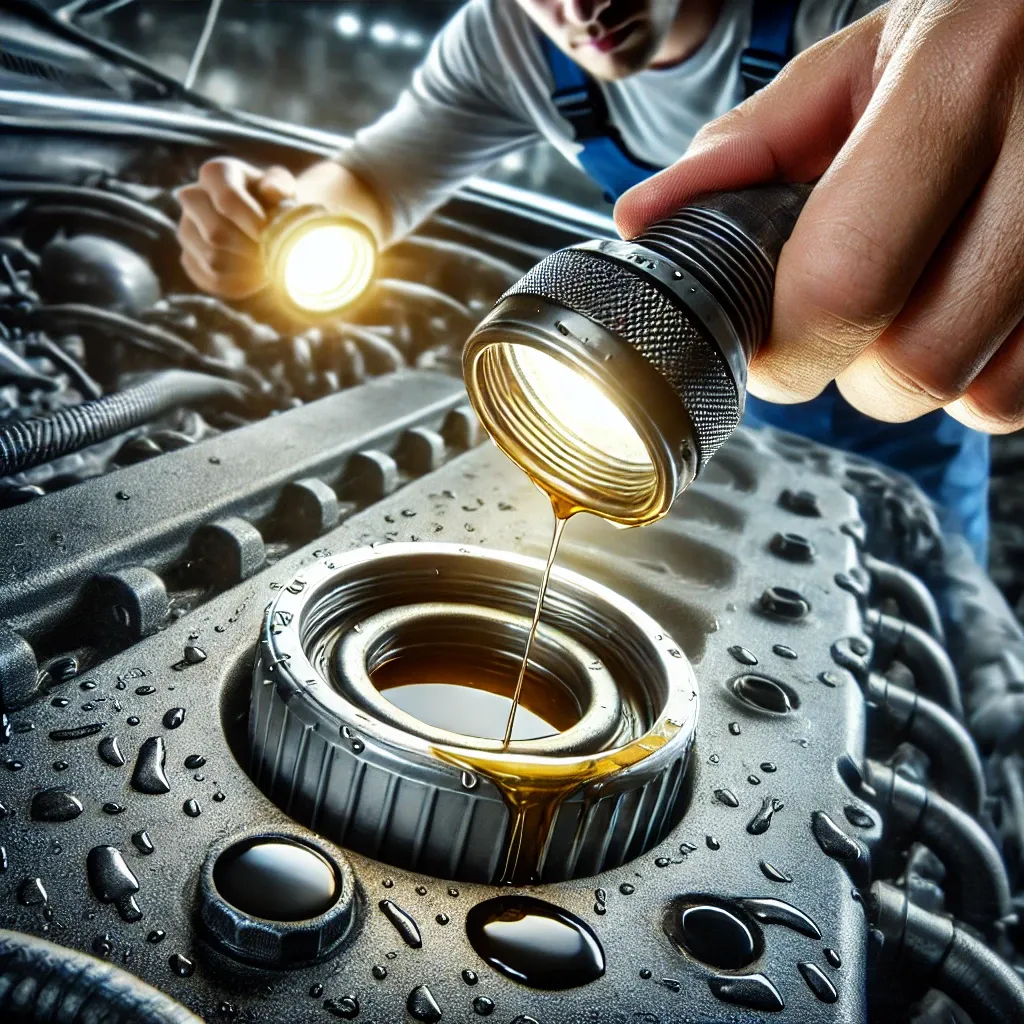Is your engine oil cap leaking or showing signs of sludge? Discover the causes behind engine oil cap leakage, how to spot oil cap bubbles and sludge, and when to replace the cap for optimal engine performance.
Engine Oil Cap Leakage
One of the common issues faced by vehicle owners is engine oil cap leakage. The oil cap plays a crucial role in keeping the engine oil sealed within the engine system, preventing contamination and oil loss. A leaking oil cap can lead to various engine performance issues, and it’s essential to identify the signs early on to avoid costly repairs.
Causes of Engine Oil Cap Leakage:
-
Improper Installation If the oil cap is not properly tightened, it can lead to leakage.
-
Worn-out Seals Over time, the rubber gasket or seal inside the oil cap can wear out, causing oil to seep out.
-
Overfilled Engine Oil When too much oil is added, it can cause pressure to build up, forcing the oil cap to leak.
-
Cracked Cap A damaged or cracked cap can lead to oil escaping from the engine.
-
High Engine Temperature Continuous exposure to high heat can degrade the material of the oil cap, making it more prone to leakage.
How to Fix Oil Cap Leakage:
-
Tighten the Cap If you notice the cap is loose, simply tighten it. However, be cautious not to overtighten, as it could cause damage.
-
Inspect the Seal Check the rubber seal for cracks or wear and replace it if necessary.
-
Replace the Cap If the cap is cracked or broken, it’s time for a replacement.
Have you ever had to deal with a leaking oil cap before? It’s a common issue, but catching it early can save you time and money.
👉 Learn More about Oil Cap Leakage 👈
Engine Oil Cap Sludge
Engine oil sludge is another common problem associated with oil caps. It is a thick, tar-like substance that can accumulate inside the engine due to poor oil circulation. Sludge buildup can also affect the oil cap, especially around its sealing area.
Causes of Engine Oil Sludge:
-
Old Engine Oil If the oil hasn’t been changed in a while, it can break down and form sludge.
-
Short Trips Frequently driving short distances prevents the engine oil from reaching its optimal temperature, which can lead to sludge formation.
-
Overheating Excessive engine heat can cause oil to break down and turn into sludge.
-
Low-Quality Oil Using low-quality oil or oil not suited for your vehicle’s engine can increase the likelihood of sludge.
-
Neglecting Oil Changes Failing to change the engine oil regularly will inevitably lead to sludge buildup.
How to Prevent Sludge:
-
Change Oil Regularly Regular oil changes are the best way to prevent sludge from forming.
-
Use Quality Oil Always use high-quality engine oil suited for your vehicle’s engine.
-
Drive Longer Distances Regular longer drives help the engine oil reach its ideal temperature, preventing sludge.
By addressing these factors, you can keep your engine running smoothly and avoid sludge buildup around the oil cap.
👉 Find More on Engine Oil Sludge 👈
Engine Oil Cap Replacement
Replacing the engine oil cap may seem like a simple task, but it’s important to get it right to ensure the long-term health of your engine. If you notice leakage, sludge, or bubbles around the oil cap, replacing it might be necessary.
Signs You Need to Replace Your Engine Oil Cap:
-
Persistent Leaks If tightening the cap doesn’t stop the leakage, it may be time for a replacement.
-
Cracks or Damage Visible cracks or physical damage to the cap are signs it needs to be replaced.
-
Inability to Seal Properly If the cap doesn’t fit snugly or feels loose, it won’t provide the proper seal.
-
Oil Stains Around the Cap If you frequently notice oil stains near the cap, it could indicate that the cap is no longer sealing effectively.
How to Replace the Oil Cap:
-
Buy the Correct Replacement Ensure that the replacement cap is compatible with your engine model.
-
Clean the Area Before installing the new cap, clean the area around the oil filler neck to avoid contamination.
-
Install the New Cap Place the new cap onto the oil filler neck and tighten it securely.
Replacing your engine oil cap is a simple task that can prevent a host of engine problems, from oil leaks to contamination.
👉 Learn More about Oil Cap Replacement 👈
Conclusion
Engine oil cap leakage is a common issue, but with early detection and the right actions, it can be easily addressed. Regular maintenance, such as changing your engine oil and inspecting the oil cap, will help prevent sludge buildup and ensure the longevity of your engine. Whether you need to replace your oil cap or simply tighten it, understanding the signs of a problem can save you from more costly repairs down the road. Keep an eye on your engine oil cap to keep your vehicle in top shape!






